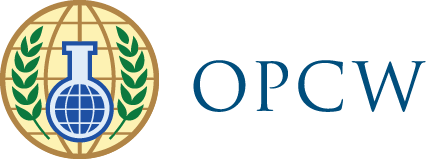The Chemistry in Conflict Workbook introduces the Chemical Weapons Convention to high school chemistry students. It familiarises students with the history of chemical weapons, the obligations of the Convention, and the role of ethics in science. The workbook facilitates these learning objectives through practical application, which includes lab activities, group projects and independent learning exercises. Chemistry in Conflict uses a multidisciplinary approach and can be applied to a broader curriculum or adapted to incorporate current events to promote the work of the OPCW and its continued relevance.
Chapter 1
Defines chemical weapons and methods of detection and synthesis, as well as the physiological effects of chemical weapon use. Students will be able to explain chemical weapons from a technical point of view, and apply this knowledge through activities to classify chemical agents and identify the underlying biochemical processes of chemical weapon exposure symptoms.
Chapter 2
Explains the history of chemical weapons development, the key milestones and obligations of the Chemical Weapons Convention, and the work of the OPCW. In completing this chapter’s lesson activities, students will be able to explain the remit of the Convention and role of the OPCW and engage in informed debate.
Chapter 3
Provides an overview of chemical weapon development, the ethical debates that accompany their use in conflict, and the three ethical frameworks used when facing an ethical dilemma. Students will be asked to apply these frameworks to a case study of dual use chemicals in a debate.
Chapter 4
Explores protection against chemical weapons, namely the functionality of activated carbon gas masks. Supplementary activities for this chapter will have students conduct experiments and research projects to understand how activated carbon works at the molecular level.
